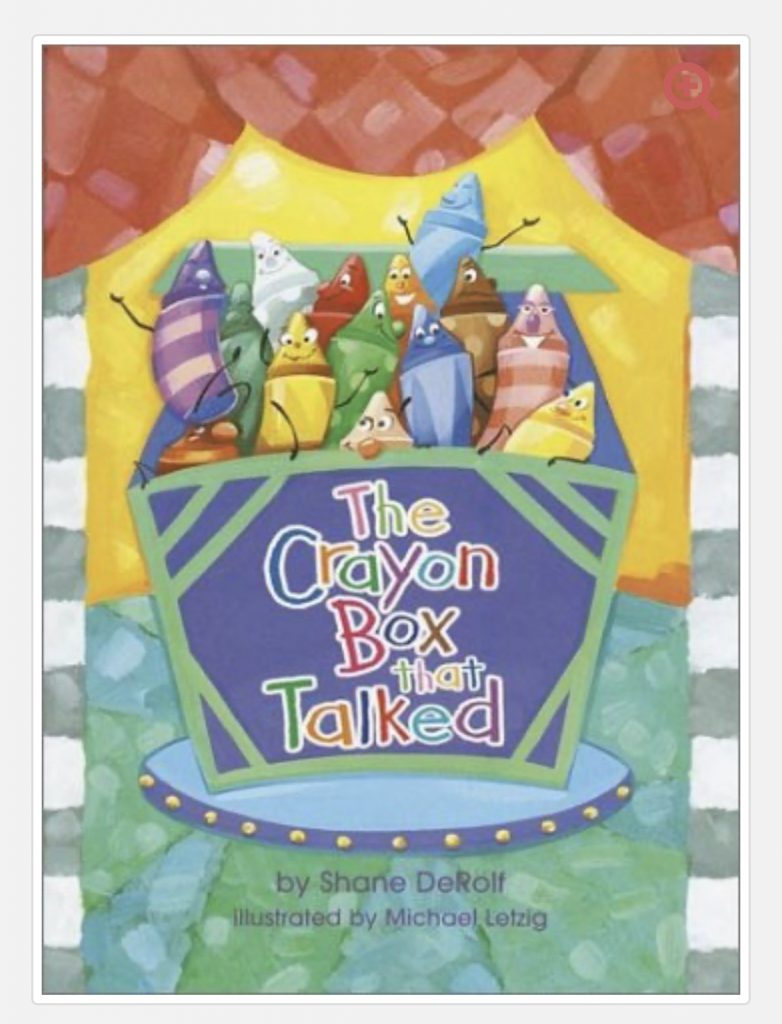Have you read. “The Crayon Box that Talked,” by Shane Derolf and Michael Letzig? In this story, the crayons come to life, and are overheard quarreling regarding color. But they learn to appreciate each other when they discover the power and beauty that happens when they draw TOGETHER.
This simple story with a powerful message is a wonderful way to illicit student discourse around social justice, the beauty of our melting pot of different cultures and races, and the importance of working together. We each are unique, special and can offer something that will make this a better place for ALL.
One example Of how to use this story is to give the students each one color to draw a picture with on a sheet of paper. After they complete the first picture, give them a second sheet of paper. This time give a total box of crayons to draw the picture. Once they have completed the assignment gather together in a circle for a conversation using open-ended questions. This activity can be implemented at a variety of developmental levels all at once or formed into a unit. Below are some simple ideas to get you started:
- For young children, ask what they preferred, drawing with one color or many colors and why. Using a talking stick and going around the circle allows each a chance to share. Finally read the story. Then follow-up with a conversation about how the crayons felt in the story. What did the crayons learn. By focusing on the story, nobody should feel pressured. The story opens the door for further topics, discourse and learnings.
- For kids a little older, start by not having the kids actually share their pictures but allow them to use it to reflect when asking questions. Using a talking stick, go around the circle inviting responses from each without feedback from others. The first part is to invite reflection and active listening. Discuss how it felt to draw with one color vs. a box of colors. (Everyone needs to know that their feelings and emotions matter therefore be sure to establish ground rules regarding responses before, during and after the community circle. ) Questions such as what differences happened when able to add color to their pictures. Did their attitude or feelings regarding the assignment change and why? Read the story. Brainstorm the reasons the crayons didn’t like each other at first. Then what did they learn they made them appreciate each other? Discuss why it is important to accept people who are different from us.
- For secondary kids this story still works and invites further Social Justice and Restorative Justice activities. Using the story as introduction then moving forward into deeper questions and activities. Some of the same questions from above can be implemented plus discussions about how they can make a difference to create a better world for ALL people.
*To extend this conversation through story telling, use the crayon books by Drew Daywalt and Oliver Jeffers. Using stories with kids of all ages is a great way to open the door to conversations. It also teaches reading and writing. Research shows that reading aloud to our kids is the best way to build vocabulary, comprehension and teach the reading process. Plus by doing it with fun books in a comfortable setting, it doesn’t feel like reading class!
From an unknown author: “We could learn a lot from crayons. They are all different colors, but they all exist very nicely in the same box.”
